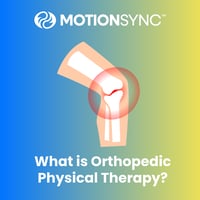How To Relieve Neck Pain: Physical Therapy Tips

Neck pain is one of the most common musculoskeletal complaints, affecting people of all ages and lifestyles. Whether it’s caused by poor posture, muscle strain, or an underlying medical condition, persistent neck pain can interfere with daily activities, work, and sleep.
Fortunately, with the right combination of physical therapy, targeted exercises, and self-care strategies, most cases of neck pain can be effectively managed. Read on to learn more about the causes, symptoms, and expert-backed management tips to relieve neck pain and restore mobility.
Understanding Neck Pain: Common Causes
Neck pain can stem from various factors, including muscular, skeletal, and neurological issues. Some of the most common causes include:
- Poor posture – Spending long hours hunched over a computer or phone can strain the neck muscles.
- Muscle tension and overuse – Repetitive motions and prolonged stress can lead to chronic tightness.
- Herniated discs or cervical stenosis – Degenerative spine conditions can cause nerve compression, leading to pain and tingling.
- Whiplash or trauma – Sudden impacts from car accidents or falls can injure the neck’s soft tissues.
- Arthritis – Osteoarthritis and degenerative disc disease can contribute to chronic neck stiffness and discomfort.
Recognizing Symptoms of Neck Pain
Neck pain symptoms can range from mild stiffness to severe discomfort that radiates into the shoulders and arms. Common signs include:
- Dull, aching pain in the neck and shoulders
- Limited range of motion when turning or tilting the head
- Sharp, shooting pain that may travel down the arms
- Tension headaches originating from the base of the skull
- Tingling, numbness, or weakness in the hands (if nerves are compressed)
If left untreated, chronic neck pain can lead to postural imbalances, reduced mobility, and increased tension in surrounding muscles.
How Can Physical Therapy Help?
If you're searching for physical therapy near you to address neck pain, working with a physical therapist in NYC can provide significant relief. A well-rounded treatment plan may include:
- Postural correction exercises – Strengthening the upper back and core to support a neutral neck position.
- Manual therapy and soft tissue mobilization – Techniques to release tight muscles and improve blood flow.
- Cervical spine stretching routines – Improving flexibility in the neck, shoulders, and upper back.
- Strength training – Targeting deep neck flexors and scapular stabilizers to enhance support.
- Ergonomic adjustments – Guidance on workstation setup to reduce strain on the neck.
At-Home Management and Prevention Tips
In addition to physical therapy in NYC, incorporating the following self-care strategies can help relieve neck pain and prevent future flare-ups.
1. Adjust Your Workstation
Ensure your computer screen is at eye level and your chair supports a neutral spine posture.
2. Apply Heat or Ice Therapy
Use heat to relax tense muscles and ice to reduce inflammation after acute pain flare-ups.
3. Practice Gentle Neck Stretches
Incorporate daily chin tucks, upper trapezius stretches, and shoulder blade squeezes to reduce stiffness.
4. Improve Sleep Ergonomics
Use a supportive pillow that maintains proper cervical alignment while sleeping.
5. Stay Active and Strengthen Supporting Muscles
Regular low-impact activities like swimming, yoga, and Pilates can help maintain mobility and prevent stiffness.
For more self-care tips and exercises, check out NYU Langone Health’s neck pain treatment guide.
When to See a Doctor or Physical Therapist
If neck pain persists for more than two weeks, worsens with activity, or causes neurological symptoms like numbness or weakness, seeking professional care is essential. A doctor may recommend imaging tests such as X-rays, MRIs, or CT scans to assess the severity of the condition.
A physical therapy place near you specializing in neck and spine rehabilitation can develop a structured plan to restore function and prevent chronic pain.
Final Thoughts
Neck pain can be frustrating and limiting, but with early intervention and the right treatment—including physical therapy in NYC—you can restore mobility and reduce discomfort. If you’re looking for expert guidance, consider visiting a physical therapist in Queens or your nearest PT clinic in Brooklyn for a customized recovery approach.





